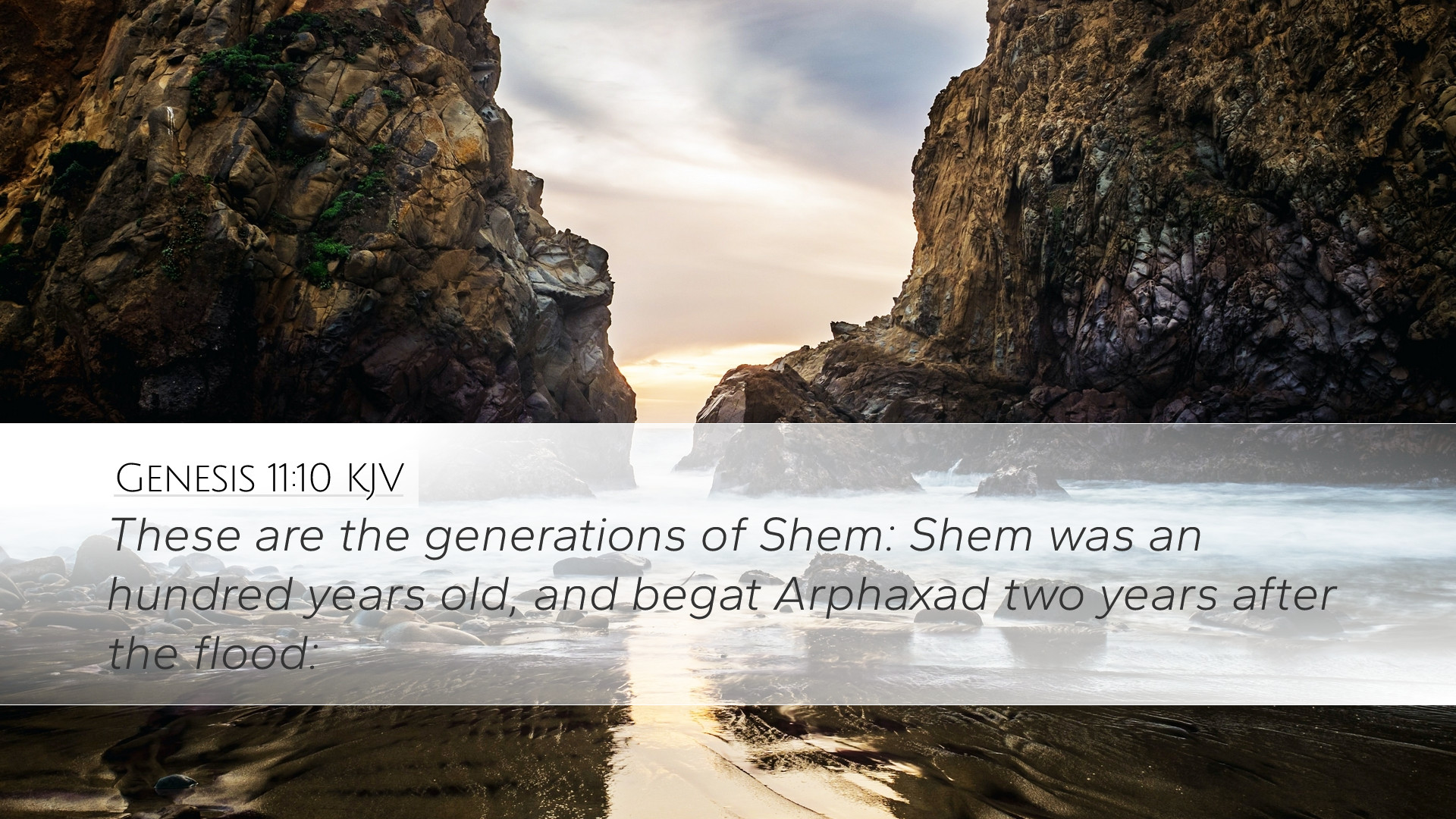Genesis 11:10 Commentary
Verse: "These are the generations of Shem: Shem was a hundred years old, and begat Arphaxad two years after the flood."
Introduction
This verse serves as a pivotal point in the genealogy presented in the Book of Genesis, tracing the lineage of Shem, one of Noah's sons. This genealogical record is vital for understanding the historical and theological context of the Scriptures, revealing God's purposes through the lineage of Shem leading to Abraham and, ultimately, to Christ.
Comprehensive Analysis
1. The Significance of Generational Records
The genealogies in Scripture, particularly in Genesis, serve multiple purposes. They establish historical continuity, provide a framework for the unfolding plan of salvation, and demonstrate God's faithfulness across generations.
-
Historical Context: By situating Shem's lineage in the time following the flood, the verse underscores the restoration of humanity and God's covenant relationship with His creation.
-
Theological Implications: The line of Shem is presented as the chosen line through which God's promises will be fulfilled. This lineage becomes significant for understanding God's promise to Abraham and the eventual birth of Christ.
2. The Character of Shem
Shem's character and role are notable within the scriptural narrative. Matthew Henry emphasizes that Shem is often considered a type of Christ, as he is included in the promise of blessings extended to Noah's sons (Genesis 9:26). Shem's name, which means "name," may also signify the importance of fame and reputation in the biblical context.
3. Age and Timing—A Reflection of Divine Order
The specific mention of Shem being "a hundred years old" when Arphaxad was born indicates a divine order in the unfolding of God's plan. Adam Clarke notes that Shem's long life and advanced age at the time of fathering Arphaxad show the accelerating generations that followed the flood, leading towards God's intended plan for humanity's redemption.
4. The Post-Flood Context
This verse is set against the backdrop of a post-flood world, where humanity begins to repopulate the earth. The flood serves as both a physical and spiritual reset for mankind. Albert Barnes expresses that these genealogies remind the reader of God's mercy and grace in preserving a remnant through the flood, thus allowing for the continuation of His promises.
5. The Lineage of Arphaxad
Arphaxad, Shem's son, becomes a critical figure in the genealogical line leading to Abraham. This connection is essential, as it shows God's deliberate choice in establishing His covenant people. Matthew Henry points out that through Arphaxad's descendants, we see the fulfillment of God's promise to bless all nations through Abraham, as later reiterated in Genesis 12:3.
6. Lessons on Legacy
The account of Shem and his descendants invites personal reflection among pastors, theologians, and students of the Word. The importance of legacy—both spiritual and familial—is emphasized through the generations that follow Shem.
-
Spiritual Legacy: What legacy are we leaving for future generations in our faith communities?
-
Faithfulness to God: How does our walk with God influence those who come after us?
Conclusion
Genesis 11:10 encapsulates the essence of divine providence working through human history. By placing Shem's lineage within the context of God's redemptive plan, it invites us to appreciate the significance of generations that are faithful to God's calling. The analysis derived from public domain commentaries enriches our understanding and reaffirms the enduring nature of God's promises, prompting us to reflect on our roles in God's unfolding story.


